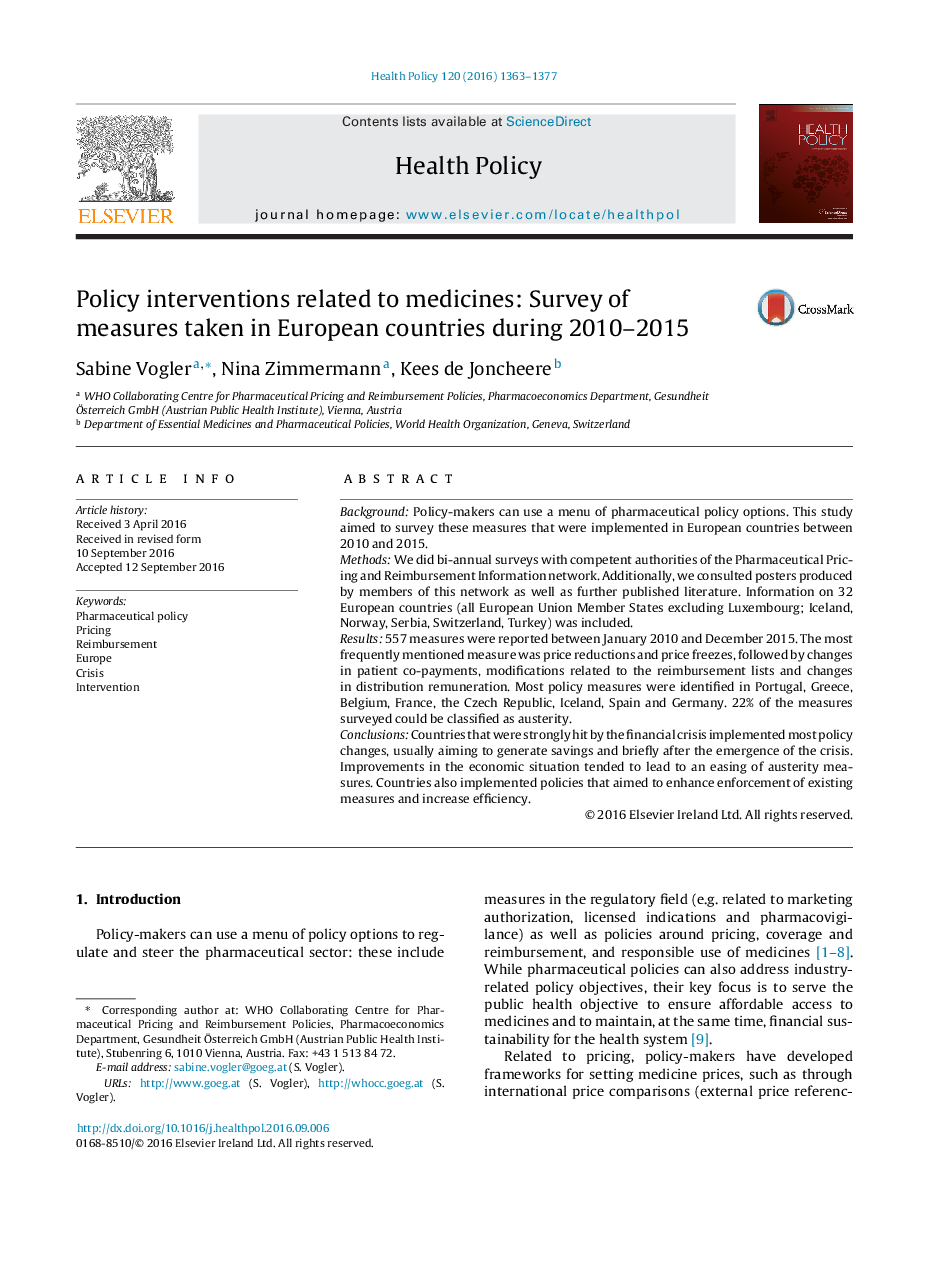| Article ID | Journal | Published Year | Pages | File Type |
|---|---|---|---|---|
| 6238878 | Health Policy | 2016 | 15 Pages |
â¢Over 550 pharmaceutical measures were surveyed in 32 European countries (2010-2015).â¢Most frequent measures were price reductions and changes in co-payments.â¢Countries strongly hit by the crisis tended to make more policy changes.â¢Less than a quarter of the pharmaceutical policies were pure austerity measures.â¢The international experience supports policy-makers in their choices of policy options.
BackgroundPolicy-makers can use a menu of pharmaceutical policy options. This study aimed to survey these measures that were implemented in European countries between 2010 and 2015.MethodsWe did bi-annual surveys with competent authorities of the Pharmaceutical Pricing and Reimbursement Information network. Additionally, we consulted posters produced by members of this network as well as further published literature. Information on 32 European countries (all European Union Member States excluding Luxembourg; Iceland, Norway, Serbia, Switzerland, Turkey) was included.Results557 measures were reported between January 2010 and December 2015. The most frequently mentioned measure was price reductions and price freezes, followed by changes in patient co-payments, modifications related to the reimbursement lists and changes in distribution remuneration. Most policy measures were identified in Portugal, Greece, Belgium, France, the Czech Republic, Iceland, Spain and Germany. 22% of the measures surveyed could be classified as austerity.ConclusionsCountries that were strongly hit by the financial crisis implemented most policy changes, usually aiming to generate savings and briefly after the emergence of the crisis. Improvements in the economic situation tended to lead to an easing of austerity measures. Countries also implemented policies that aimed to enhance enforcement of existing measures and increase efficiency.
